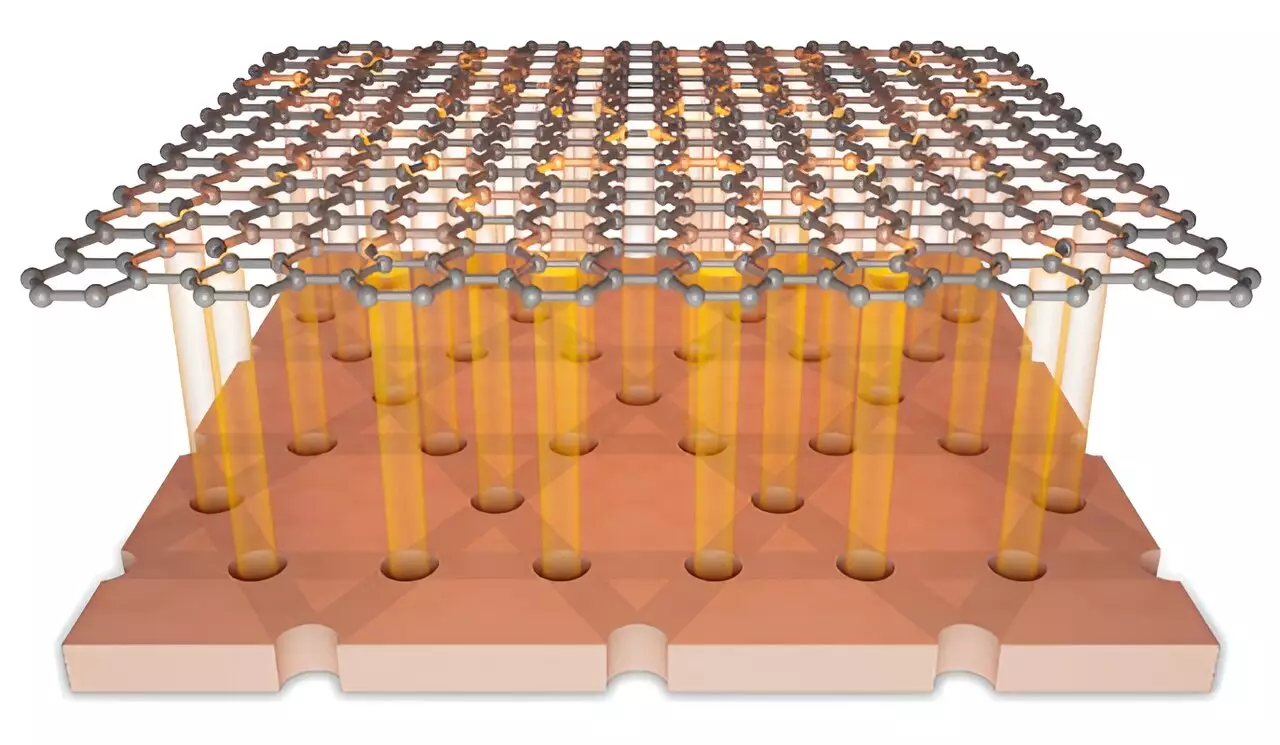Graphene, a two-dimensional material known for its exceptional electrical and mechanical properties, has long fascinated researchers aiming to manipulate its electronic characteristics for various applications. Recent progress in this field has led to the development of sophisticated techniques to engineer the band structure of graphene. A pioneering study published in Physical Review Letters introduces a transformative method involving artificial kagome superlattices, enabling scientists to selectively tune electronic bands in this remarkable material. This article delves into the innovative aspects of this research and its potential implications for the future of material science.
Historically, methods such as heterostructures and alloying have formed the backbone of band engineering in graphene. However, these techniques often suffer from significant limitations, specifically when it comes to the precise and incremental adjustment of band structures. Conventional approaches frequently lack the means for in situ control, making it challenging to dynamically explore the electronic properties of graphene. As a response, the introduction of van der Waals (vdW) materials, especially graphene, has expanded the toolkit for scientists by introducing gating and moiré heterostructures. Unfortunately, these methods still grapple with the necessity for versatility and the ability to facilitate selective manipulation of band dispersions.
To tackle the limitations posed by traditional techniques, the research team led by Prof. Zeng Changgan at the University of Science and Technology of China has innovated a groundbreaking approach utilizing artificial kagome superlattices. This large-period superlattice, with a spacing of 80 nm, plays a critical role in effectively bending and compressing high-energy bands into a lower-energy region accessible for experimental observation. What sets this method apart is the incorporation of a high-order potential, enabling a reconstruction of the band structures by modulating various contributions. This aspect not only allows for fine control over the dispersion characteristics but also broadens the scope for discovering new physical phenomena within the graphene framework.
The study’s novel kagome lattice was fabricated using cutting-edge van der Waals assembly and electron beam lithography techniques, which are essential in crafting the intricate patterns required for this level of band structure manipulation. Remarkably, the lattice functions as a local gate for encapsulated graphene, empowering researchers to independently vary the voltage across both the kagome lattice and the underlying silicon substrate. This dual control mechanism permits careful regulation of both the artificial potential’s strength and the carrier density within the graphene layer, enhancing the fidelity of the observed phenomena.
One of the remarkable findings from this study is the capability to observe and fine-tune the spectral weight redistribution among several Dirac peaks within graphene. These peaks are fundamental characterizations of electronic behavior in graphene, and their modulation represents a significant leap in the field. Additionally, the scientists discovered that applying a magnetic field could mitigate the influence of the superlattice on the band structure, thereby re-establishing the intrinsic Dirac band. This complex interplay between external factors and the superlattice’s effects delineates another layer of control over the electronic properties of graphene, expanding the framework for future research.
The innovative capabilities introduced by this research herald a new chapter in band structure engineering. The approach of using artificial kagome superlattices could significantly enhance the potential for manipulating electronic properties in graphene-based devices, which range from quantum computing elements to advanced sensors. Furthermore, by laying the groundwork for exploring novel physical phenomena, this method opens avenues for the development of materials with engineered functionalities designed for specific applications. Collaborative efforts among leading researchers from various institutions—including Wuhan University and IMDEA Nanociencia—amplify the potential for cross-disciplinary insights, invigorating the field of material science as a whole.
The introduction of artificial kagome superlattices marks a pivotal advancement in the fine-tuning of graphene’s electronic properties. This paradigm shift not only overcomes the limitations inherent in traditional band engineering methods but also invites a plethora of opportunities for future scientific exploration and technological innovation. With continued research in this domain, the ability to adeptly control material properties could lead to groundbreaking applications that redefine our understanding of electronic materials.


Leave a Reply